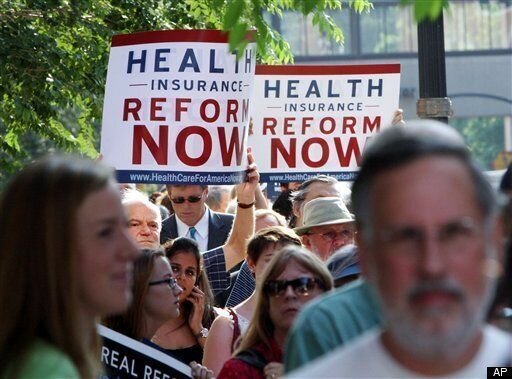Health insurance industry executives knew from the beginning that their strategy of moving as many Americans as possible into high-deductible health plans would lead to financial ruin and even early death for millions. But they didn’t care. They cared more about implementing a strategy that gave them greater assurance of meeting Wall Street’s profit expectations.
That became clear to me when I was at a Cigna leadership retreat just before we were about to roll out a campaign to persuade our employer customers to move to “full replacement” as soon as possible. That meant convincing those customers to eliminate all the managed care plans with relatively low out-of-pocket requirements and replace them with so-called “consumer-driven health plans,” an industry-crafted euphemism for insurance that required ever-increasing deductibles and other cost-sharing obligations.
My job would be to lead the effort to get employers to fall for our talking points – that CDHPs and “consumerism” would “empower” their employees to make their own decisions about their health care, which, we said, would reduce “unnecessary” care. Our corollary talking point was that health care costs kept increasing because Americans didn’t have enough “skin in the game” and that as a consequence, they were going to the doctor too much, being admitted to the hospital too often, and taking medications they didn’t really need.
The ultimate message at that leadership meeting: If we were not on board with what was becoming an industry-wide strategy, we would not be considered team players.

Here’s how I described that day in Deadly Spin:
At a leadership retreat I attended a few years ago, a (recently hired) vice president was trying to explain the benefits of consumer-driven care to about one hundred of his colleagues who were hearing about the company’s consumerism strategy for the first time. He was having a hard time convincing us that consumer-driven health plans would be good for certain segments of the population.
He was peppered with questions about how the plans could be a good deal for people with chronic conditions and people who didn’t have extra money to put into a savings account or otherwise meet high deductibles. After about thirty minutes of nonstop questions, he finally said, “Look, you’re just going to have to drink the Kool-Aid.”
As far as I know, everybody but me drank up. The problem, of course, was that none of us got sick or died or went broke because of this strategy. But over the coming years, an untold number of insured Americans we would never meet would lose their homes or be saddled with medical debt for the rest of their lives. And many would die because they didn’t have enough money to go to the doctor or even pick up their prescriptions.
Now more than half of the U.S. workforce is enrolled in high-deductible health plans with ever-increasing cost-sharing obligations. According to The Commonwealth Fund, these underinsured Americans experience persistent financial problems following their medical bills including damage to their credit ratings, depleted savings and bankruptcies.
More than 40% of people who have coverage on the individual market—and nearly 30% of people with coverage through their employers—are underinsured and more likely to forego needed care, according to the Commonwealth Fund. Those enrolled in privately operated Medicare Advantage plans can also be required to pay thousands of dollars before their insurer will cover their care.
While the Affordable Care Act established a ceiling for out-of-pockets, that ceiling rises every year—and is far beyond what most middle-class families can afford. The out-of-pocket maximum for 2022 will increase to $8,700 for an individual and $17,400 for a family. Those numbers are impossibly high when you consider that 56% of Americans have less than $5,000 in savings and, according to the Federal Reserve, nearly 40% don’t have enough money to cover even a $400 emergency.
The people who have been most disadvantaged by this oversight are those with modest incomes; people of color, including American Indians and Alaska Natives; and the millions of Americans who have chronic conditions. They are the Americans who are most likely to forgo needed care or go deep into debt.
- 22.8% of Black women cancer patients enrolled in high-deductible plans skipped their medications to save money, compared to 8% of white cancer patients.
- 59% of blood cancer patients enrolled in traditional Medicare do not begin active treatment within three months of their diagnosis because of high out-of-pocket costs.
- Patients newly diagnosed with multiple myeloma in traditional Medicare plans incur cumulative out-of-pocket costs averaging nearly $24,000.
Everyone who pays for health insurance should have access to health care with out-of-pocket costs that are affordable to their family. Forcing families to pay more than $17,000 (up from $12,700 in 2014) – on top of the cost of health insurance premiums – is neither real nor affordable health coverage for too many Americans.
To make sure this crisis is on policymakers’ radar screens, I have helped convene a coalition called Lower Out-of-Pockets NOW comprising 18 organizations to educate the public and employers and to advocate for solutions. You can find more information about the coalition at LOOPcoalition.org.




















